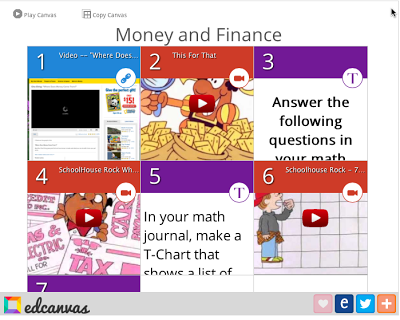
Each month, I invite a different educator to share a few classroom management tips that have worked in his or her classroom. It’s part of a blog post series called Real Teachers, Real Tips. My goal is to feature a large cross-section of teachers from all different parts of the world, at a wide range of grade levels, in a variety of teaching scenarios. Want to share your ideas here? Just fill out the guest blog form!

April’s featured teacher is Tracey Schumacher, a wife, mom, teacher, and Technology Integration Specialist for her district. She is the author of The Teacher’s Chair Blog, and has been teaching elementary school students for 12 years. She is dedicated to collaboration and sharing best practices. Tracey holds a Dual Master’s Certification in Special and Regular education and currently teaches in a 1-2 multiage classroom. She works closely with a colleague to run her school’s Student Council, a group that sponsors school-wide events to support local charities. She has a passion for innovative education and believes that teachers should always be on a quest for learning.
Here’s a little riddle for you: What do you get when you cross first graders with second graders in a multiage classroom plus Common Core Standards for each? The need for a whole lot of organization!
As a multiage teacher, I have a constant need and determination to be organized. Always lurking in the back of my mind is: “grouping, grouping, grouping!” Keeping track of the strides my students are making along the learning continuum is key to planning differentiated instruction. With a classroom structure such as mine, there is no choice but to have differentiated learning stations. A Daily 5 approach for ELA has been a great way for me to structure my morning because it fosters literacy independence. Kids are moving through workstations and being challenged at their own pace. To me, the fact that a workshop approach provides flexible grouping is key.
But the question has always remained…”How can I best differentiate for other subjects?” Years of experience and collaborative planning have gone a long way in helping me learn how to tier my instruction to meet the very different needs of my little learners.
It’s no surprise to teachers out there that there is a big difference between planning differentiated instruction and delivering differentiated instruction. How many times have you set up centers with materials, manipulatives, games, etc. only to look up at your clock at realize that your entire lunch/prep period is over? How many of you have become proficient in laying out glue sticks, scissors, rulers and other various supplies with one hand while trying to eat your lunch with the other hand?
Yes, I get that…that’s me too. I’m with you. But what if I told you that I found:
- a little gem to make delivering differentiated instruction a lot easier?
- something that you can create once and use year after year?
- something that utilizes technology to present multimedia and can be combined with differentiated tasks?
- a way for you to quickly set up a workstation for your students that enables you to sit and eat your lunch with two hands?
I’d like to think you’d be quite happy…
Let me introduce you to my new friend, Edcanvas:
If you are new to Edcanvas, you should know that it is a place where you can “organize, present and share knowledge.” I love the option of tying in student responses to multimedia presentations. You can use Edcanvas in any setting: whole group, small group and individual work. The students have the option to leave comments and/or questions on the presentations. At a glance, what the students see is this eye-catching format:
As far as classroom management goes, Edcanvas is a place where I can choose a topic, present information and assign differentiated tasks for my students. Let’s take a look at an Edcanvas I made for measurement. Go ahead, click around in the Edcanvas below… Have fun – I’ll wait!
It looks great, right? You’re almost convinced, but you may be asking: How is something like Edcanvas used as a management tool?
There are several answers to that question, depending on how you want to use it. Below are just some of my short term goals for using Edcanvas:
Guided Math:
At least 3 days a week, I have Guided Math in place in my classroom. Meaning, I present with a mini-lesson and then break the students into rotating groups. Some students work with me, some with my Teaching Assistant, some students are on the computers, and some are playing games to reinforce skills. The kids who are at the computers can work on any Edcanvas I create. The only problem I ever have is getting them to transition!
Reader’s Workshop:
Edcanvas is like a listening center on steroids with multimedia bringing the stories to life! I can easily pop a digital e-book onto one canvas and some sort of response to literature on another.
Research/Presentation:
I have first and second graders, so I’m going to keep it fairly simple. In the spring, the students will be writing nonfiction books. I see this as an extension for that writing project. They can present something that they learned through their research on 2-3 canvas tiles. Did someone say Common Core? CCSS.ELA-Literacy.W.2.6 With guidance and support from adults, use a variety of digital tools to produce and publish writing, including in collaboration with peers. Perfect!
There is a long-term goal I have for using Edcanvas, and it involves a flipped classroom approach. I find it fascinating and am still learning about it myself. There is a lot of talk about this type of approach to delivering instruction. You can find a useful infographic on what a flipped classroom is here.
Are you ready to do this? I heard that resounding, “Yes!” so I created a little tutorial for you:
The quick tutorial can’t begin to cover all of the awesome Edcanvas features, but it will help you get a feel for it. I know your brain is already thinking about how you can use this tool, too. You are ready for this! For more information, check it out and sign up – it’s FREE and easy to use!
I enjoyed the opportunity to share with you. and would love to hear your thoughts about this clever web-based tool! To contact me or learn more about what’s happening in my classroom, stop by the Teacher’s Chair to have a seat and read awhile! Feel free to ask questions about Edcanvas or share your experiences in the comments below.

Angela Watson
Founder and Writer
Discussion
Leave a Reply
OR

Join our
community
of educators
If you are a teacher who is interested in contributing to the Truth for Teachers website, please click here for more information.

















Thank you for sharing! I am going to dive in right away. This looks amazing.
Thank you so much for the comment! I think you will love it 🙂
I love this idea. But at our school Youtube is blocked. Also how do the kids use the canvas? Do they have their own computers? I’ve taught a 2/3 multi age for many years. Love it.
Thanks, Therese! Our school blocked YouTube for a while and finally gave us access. Hopefully all schools will come to utilize it as a useful teaching tool. I have 4 computers in the classroom for the kids to use, but we also go into the lab, where everyone works on their own computer.
Thank you so much for sharing! This looks brilliant. I am going to have a go with my Science topic.
This is a wonderful tool. I’m a secondary school spec Ed teacher – is it useful with older students?
Thanks, Joanne! This tool is useful no mater what the grade lever. Once the students are taught how to use it, the possibilities are endless.
Thanks Tracey. I tried it with my magnet unit after seeing your tutorial and the kids loved it. I will have to try to incorporate it more often. I love your ideas for measurement. I am starting this next week, so I will have to try out some of the ideas and see how to make them fit with metric measurement.